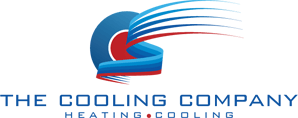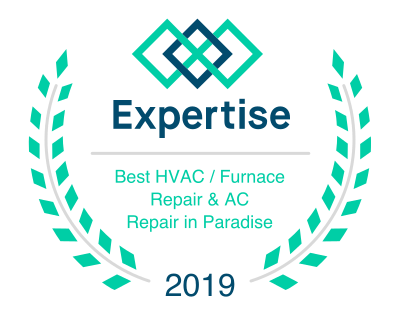Unless you are blessed with naturally cool temperatures in your area all year round, you’ve probably enjoyed the benefits of air conditioning at some point. Whether it is for your home or business, the importance of HVAC maintenance, particularly for the thermostat of your split system HVAC unit, is paramount. Planning for HVAC tune-up and maintenance visits, as well as possible repair or breakdowns, can save you time and money in the end, preserving your warranty and extending the lifespan of your unit.
The average cost of HVAC maintenance is something that all homeowners will need to budget for. But, remember, not all systems and the companies that install them, or the technicians that service them, are built the same way. Consequently, carrying out a DIY estimate can help you tackle the issues and understand what you are spending money on. HVAC system maintenance costs aren’t new, but they do get overlooked. This is unfortunate because they can make a vast difference to your energy bills over the long haul. You just need to take the time to learn more about them, ask the right questions, comprehend the connections involved, and know what to expect.
The importance of HVAC maintenance is clear, but before you dive into the costs of HVAC maintenance it’s essential to comprehend what you’re looking at, down to the nuts, bolts, and debris. This can be especially confusing if you’re not familiar with the terminology used. Here, we’ll break down the terms and provide useful examples to explain why they matter.
When calculating the cost of a replacement HVAC system for your home, you need to consider maintenance costs, which include labor and cases where your technician may have a flat rate or an hourly rate. Also included in your total cost would be parts to keep your heating system or AC system working properly. Regular maintenance by a professional can help you to avoid major repairs. Plus, this is a strategy that will also extend the life of your existing HVAC equipment. Unfortunately, it’s becoming more common for people to replace their HVAC systems early due to a lack of knowledge on the topic. And that is because they weren’t aware of all the hidden costs, such as debris removal, associated with a new system. Such costs include installation fees, attic reinstallation fees, or additional ductwork costs.
There are still plenty of people who dread the idea of an HVAC inspection. It may take some explaining, but you will come to understand why it is important for one to have their unit inspected regularly. If you want to save money on heating and air conditioning, one of the best things you can do is to get an HVAC maintenance check-up at least once a year.
Let’s look at some of the HVAC repairs you might want to keep top of mind as an example. Ensuring the connections in your ductwork are secure, for instance, or checking for signs of wear and tear that might lead to breakdowns.
Air Duct And Vent Maintenance
Air ductwork is a type of mechanical ventilation that runs through buildings to help regulate and maintain indoor air quality. This is the part of your maintenance that often incorporates elements such as fans and ducts. The cost of installing and maintaining these systems can vary greatly. The total cost depends on the size and design of the structure, as well as the materials and other features that are incorporated into the system.
You can also practice some preventative maintenance measures outside of your routine maintenance visits conducted by a professional HVAC technician. You simple duct cleaning tasks, for instance, can be accomplished as a bit of DIY around the house. This practice will help to keep you away from some major repairs, keeping your system in good condition.
Plus, there are some simple tips that you can use to know whether or not you need duct cleaning or venting cleaning. All it takes is paying attention to the unit – both the indoor and the outdoor unit. If you spot anything on it like mold, dust, or debris, then you are likely due for a cleaning. When factoring in HVAC maintenance costs, you really don’t want a mold problem to take root in your home, creating more significant issues down the line.The task at hand requires a diligent job to remove something as troublesome as mold from your HVAC system. Different types of mold, if left unchecked, can soon take over the lungs of your home, spreading swiftly and in no time at all. Bear in mind that the insidious enemy might not always be visible from the vents. However, an unmistakable sign is an unusually musty odor — this is often the grand announcement of mold’s presence in your home’s HVAC system. The moment you identify mold or confront such odorous signals, it is pivotal that you transcend the realms of a standard maintenance contract. Instead, a quick schedule for some emergency service becomes of the essence. Given the present-day market conditions, hvac companies may charge anywhere from $500 to well over $5,000 for removing mold from your air ducts, a figure that includes labor costs and tune-up costs, depending on the intensity of the issue.
Contrastingly, matters regarding dust are more visual. Detecting dirty filters is relatively easier. Although cleaning the drain line and keeping the moving parts well lubricated might not seem as straightforward, these HVAC maintenance tasks cannot be overlooked. Such tasks are essential additions to your routine filter checks since they aid in maintaining optimal airflow throughout the system. If you detect a layer of dust starting to gather around, some tender loving care will indeed go a long way in helping you steer clear from more formidable repairs. It is a particularly wise decision to undertake a central AC clean-up promptly after concluding any home remodeling work. Such processes are inherently dirty and might cause unwanted dust to accumulate in your vents.
In certain cases, you might even discover insects, or stumble across evidence signifying the presence of rodents in and around your AC Unit or HVAC line. This served as an undeniable sign hinting at an urgent cleaning requirement. Not only does this mean that your air filters, vents, and ducts could do with a good cleaning, but it also implies that the critters might eventually find a way into your house, or worse, cause unforeseen damage that would only amplify your repair costs.
Expenses due to dirty ducts and vents can also silently creep into your finances via your energy bills. A dirty unit operates far from achieving optimum energy efficiency. Try comparing your energy bills over the years. It’s important to perceive HVAC maintenance costs not merely as immediate expenses but also in terms of their impact on your utility bills.
Replacing Your Heat Pumps
As the weather begins to transition from warm to colder temperatures, many adults dwell on the idea of heating their homes. If your residence is in a region experiencing a colder climate, the last thing you want is to encounter problems with your heat pumps or furnace during the unforgiving winter months.
The cost of an HVAC system can be influenced by a plethora of factors. The make and model of the condenser, the manufacturer’s recommended replacement age, and several other factors collectively influence HVAC costs. As the homeowner, it’s crucial for you to consider aspects like efficiency level and the size of the unit. Additionally, the cost of labor involved for a contractor or an HVAC maintenance contract also holds significant sway over the overall expenditure.
Components like your condenser fan motor play a critical role in your air conditioner’s effective performance. Typical HVAC maintenance costs often include charges for servicing or replacing these components. Pertaining to the setup, the condenser fan motor is a part of the unit located outdoors and plays an essential role in cooling the refrigerant in your AC and heating systems. This highlights the importance of maintaining a good airflow for the systems to perform at their best. If you discover a leak in your evaporator coil, it is recommended to take immediate steps towards replacing it.
Should you detect excessive dirt on your indoor coil or condenser coil, a simple cleaning job might do the trick. Maintaining clean coils would be a prudent step towards saving a lot of money, since dirty coils lead to an overworked system and a hike in energy consumption. Routine maintenance activities such as cleanliness checks significantly contribute to the efficiency of your system.
Reiterating an important point right off the bat, installing a heat pump will cost you less compared to a furnace. It is, however, noteworthy to add that HVAC maintenance costs can greatly vary depending on the type of system one has. Furnaces, in their resilient nature, can remarkably last you up to 20 years! Simultaneously, heat pumps have an estimated lifespan ranging from 10 to 15 years. But if you require a one-time maintenance visit for tasks like coil cleaning or possibly servicing your mini-split air conditioning system, you can expect the complete HVAC maintenance cost to fall within the price range of $100 and $400.
To conclude this comprehensive article on HVAC maintenance costs, it’s crucial to consider a series of factors when evaluating these costs. From monitoring refrigerant levels and the state of the burners to considering the humidity levels in your home, the list goes on. Each of these elements will influence how often your HVAC needs service and the associated costs.So setting up annual AC maintenance with the help of an HVAC professional in your service contracts not only gets the necessary repairs done, it is also one of the most important factors that help to stabilize your annual maintenance cost. Like a logo design representing a company’s core services, meticulously structured HVAC service contracts symbolize the commitment to home improvement and comprehensive inspection of everything within your HVAC system. This includes detailed inspections of key components such as the compressor, heat exchanger and furnaces, enabling professionals to determine the amount of any necessary repairs or replacements.
Checking On Your AC Capacitor
The AC capacitor and thermostats, often compared to the indispensable tools required for home improvement, are key parts of your AC or heating unit situated outdoors. These components productively manage the electrical components, specifically being responsible for transferring energy throughout your AC system. Occasionally, sudden faults with your electric company, like voltage irregularities or power surges, can inflict damage to your capacitor.
So how can you discern if something is awry with your capacitor? Articles and frequent visits from HVAC professionals suggest an indicator would be the peculiar humming sound your air conditioner may produce. That auditory sign could suggest the need for a replacement capacitor. Gather a few quotes, as typically, replacement costs for capacitors span a price range of around $120 to $250. Under normal circumstances, a capacitor can function seamlessly for more than 10 years.
Honestly speaking, numerous customers don’t quite understand the labyrinth of electrical components that make up their HVAC system. The complexity of the circuit board and the variation in the color of the wiring can be confusing. This is perfectly understandable as electricity is not something to tamper with lightly. Therefore, if you are uncertain, garner a professional second opinion from your trusted HVAC professional, who can provide accurate estimates.
Your HVAC Maintenance Plan
Another facet where you might spot savings is within your HVAC maintenance plans. This is also another domain where second opinions from the professionals could be beneficial if the quoted price doesn’t suit your budget. Due to the current high demand in HVAC servicing, the market is competitively split, so ensure you inquire about all necessary details such as manufacturer warranties and general air conditioner maintenance. You want to ascertain that the package you acquire provides you with priority service, if needed.
When considering HVAC maintenance tasks such as minor tune-ups or routine inspections of furnaces and thermostats, you’re looking to spend a maximum of $200. These tune-ups might include simple tasks like checking your air filter or confirming that your blower motor and belts are operating correctly. From refrigerant leaks to the cost estimates for repairs of entire HVAC units, the standard national hourly rate that an HVAC contractor charges straddles between $75 and $150. This price range covers the entire system, meaning both your heating and cooling mechanisms. An additional fee to consider is the one-time charge for an emergency visit or service call. Generally, the service call charge is between $75 and $200 and typically goes towards the first hour of service.
Conclusion
According to the U.S. Department of Energy, maintaining HVAC and air conditioner systems across the United States sums to approximately $14 million per year. This staggering figure is what it takes to keep the comforts of cool air flowing in the summer and warm air circulating in the harsh winter months. The last task that anyone would relish is the quest to find replacement parts for their HVAC system. The ultimate goal is to ensure your AC unit, including essential parts like the compressor and heat exchanger, is in tip-top shape, and the best way to accomplish that is by scheduling regular AC tune-ups with professionals. Remember that you can always cut your costs by taking on minor tasks like dusting on your own. But for more technical operations like tune-ups, installations, and replacements, let the experts equipped with the right tools do the heavy lifting.












